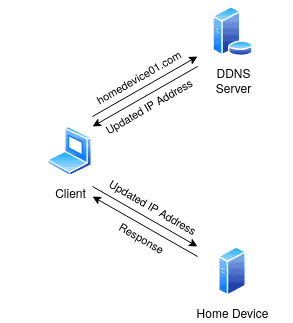1. 概述
DNS(域名系统)服务器将域名映射到对应的 IP 地址上,从而让人类更容易通过域名而非 IP 地址访问网站。
本文将介绍什么是 DDNS(动态域名系统),以及它与标准 DNS 的区别。
2. 什么是 DNS?
DNS 是 Domain Name System(域名系统) 的缩写。✅DNS 服务器通过存储域名和对应的 IP 地址,使得人类访问网站变得更加方便。
每当 DNS 服务器收到一个域名请求时,它会在数据库中查找对应的 IP 地址:

在标准 DNS 中,IP 地址是静态的,也就是说,它们不会随时间改变。
3. 什么是 DDNS?
DDNS 是 Dynamic Domain Name System(动态域名系统) 的缩写。❌与标准 DNS 不同,DDNS 支持动态 IP 地址,这些地址会随时间变化。
动态 IP 地址通常由 DHCP 服务器分配。当 IP 地址发生变化时,DDNS 服务器会自动更新其数据库中的记录:

此外,DDNS 让我们能够远程访问家庭设备,因为家庭网络中的设备通常使用动态 IP 地址。这对于远程桌面、家庭服务器等场景非常有用,避免了频繁手动更新 IP 的麻烦。
4. 小结
本文简要介绍了 DDNS 的概念、它与标准 DNS 的区别,以及它的典型应用场景。✅DDNS 的核心优势在于能够自动更新动态 IP 地址,从而实现对动态网络环境的持续访问。